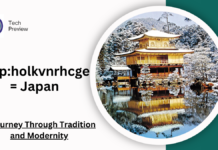In Dracula, Romania has one of its greatest tourism assets. Vampire-related tours draw thousands annually to the forests, fortresses and mountain scenery of the Romanian Carpathians and the legendary Transylvania depicted so vividly in Bram Stoker’s Dracula. They rarely leave disappointed: pursuing the vampire trail here leads visitors to imposing castles, charming Medieval towns and pockets of countryside little touched by the 21st century.
The woods and valleys are as lonely as any Jonathon Harker, the protagonist of Stoker’s original 1897 novel, journeyed through en route to the home of the blood-sucking count. There are no fewer than three castles supposedly the location of Count Dracula’s abode in the book. Vampire-related tours to Transylvania can also include visits to burial vaults and opportunities to drink blood (well almost!).
Basis for Vampire Legends—The Dracula Stoker Created
One of the earliest known novels based on the character of the Dracula we know today was John William Polidori’s “The Vampyre”, published in 1819. However, tales of vampires, known in Romania as strigoi (living/ dead) or moroi (nightmare) had been circulating in the country for centuries before. When researching “Dracula” Stoker studied Eastern European folklore relating to vampires closely. However it was only upon reading William Wilkenson’s Account of the Principalities of Wallachia and Moldavia With Political Observations Relative to Them that Stoker changed the title of his book to Dracula. This switch suggests the real-life character much of the Dracula legend has been founded upon to be Vlad III, Count Dracul (also known as Vlad the Impaler), a notoriously cruel 15th century ruler of Wallachia. Wilkenson’s account was based on the attrocities Vlad III carried out during his reign, although the work is was purportedly politically biased.
Bran Castle—Supposed Birthplace of the Dracula Legend
Any tour of Transylvania should include a visit to Bran Castle, a residence of Vlad III built by the Teutonic Knights in the 13th century. It has a grand location, perched on wooded cliffs in the heart of the Carpathians. The castle was home to the Romanian Royal Family between 1920 and 1947 but, despite a grand exterior of white turrets and towers, is relatively simply furnished. It is unlikely, too, that Bram Stoker ever visited here, despite it being vigorously marketed as Dracula’s castle. Bran village is around 20 kilometres from the larger town of Brasov.
Poenari Castle—The Real Home of Vlad the Impaler
The ruins of Poenari Castle (also known as Poienari Castle), poking out of the treetops above the Arges River valley and reached by scaling some 1400 steps, are a more poignant reminder of the legacy of Vlad III. The ruler had Poenari as his main base during his reign. The beautiful Transfagarasan Highway (National Route 7C) leads to the castle, near to the village of Capataneni.
Borgo Pass and the Castle Dracula Hotel
The Borgo Pass is the old-fashioned name for what is known in Romania today as the Tihuta Pass and for some stupendous, Dracula-inspiring scenery, it is a must-see: the basis for the location of Dracula’s realm in Stoker’s novel. Stoker almost certainly never visited the region himself but many of the descriptions are uncannily accurate. The small, isolated villages, orchards, sloping fields and distant domineering peaks mentioned in the book can all be seen, although not quite with the forboding intensity described by Harker. At the top is a distinctly less authentic Dracula sight: the Castle Dracula Hotel: a modern building catering to mass vampire tourism. The restaurant serves the dishes Harker eats in Dracula, like Paprika Hendl, made with chicken and red pepper.
Hunyad Castle—The Most Imposing Romania Castle
Many-turreted Hunyad (or Hunedoara) Castle was supposedly where Vlad III was held prsoner for seven years and is said to be one of Romania’s most haunted castles (the Most Haunted TV series has also filmed in the castle). Vlad III was released in 1469 and became Wallachian ruler again seven years later. The 14th century castle is arguably the country’s architecturally finest ancient fortress.
Medieval Town of Sighisoara
Stunningly beautiful Sighisoara is one of the best-preserved Medieval towns in Europe, with high city walls secreting an old town peppered with Gothic buildings intersected by steep, twisting streets. The highlight for Dracula fans, however, will be the bust of Vlad the Impaler on the main square and the house where he was allegedly born, now a restaurant.
Snagov Monastery and Lake
Dracula (so, Vlad III) is said to be buried at this monastery 40 kilometres north of Bucharest. The monastery buildings date from 1364, and have an atmospheric location on an island in the middle of the Snagov Lake.
Of the above sights, Bran Castle is full of tourists year-round. Yet many of the other sights provide opportunities for getting off the beaten track (and closer to the ambience of the region as described by Stoker), especially Poenari Castle and the villages of the Borgo Pass.









